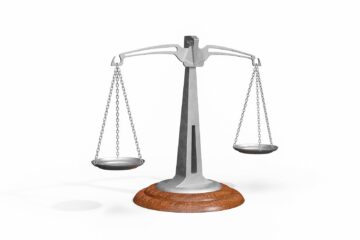![]()
All of us have heard this maxim. This maxim relates to the delay in getting justice. As Nani Palkhiwala said “The greatest drawback of the administration of justice in India today is delay… I am not aware of any country in the world where litigation goes on for as long a period as India” This gives us a picture of how long cases run in India to get justice. This becomes clearer in the case of Mukesh & Anr vs State for Nct Of Delhi which is popularly known as Nirbhaya Gangrape Case. This case shook whole India but it took 8 years to get justice for her. In India as of 2019, 43 lakh cases were pending in various high court, and almost 4 times cases are pending in district courts.
The causes for these delays are:
- Number of Judges:
As per the Supreme Court of India’s report “Subordinate Judiciary-Access to Justice 2016” judges in India 40% less than the strength of courts. It means there are 40% vacancy in Indian Court.
- Lack of Infrastructure:
As per the same report, 5,018 more courtrooms are required because existing courts are insufficient to meet the present requirement. Apart from courtrooms requirement, existing courtrooms are too small to handle such a large amount of cases. Internet facility provided is also not very good as compared to other private service providers.
- Competency of other personnel in Court:
Courts are not only functioned by Judges and advocates but by clerical staff. The current staff is inadequate and also corrupt. Sole of the judiciary is to give justice corruption-free but the sole of these courts is butchered by these clerical staff.
- Filling false cases:
In recent years it also has been observed that false cases are filed to harass members of society. These cases have no base to be admitted in the court but are filed and add the burden to the court which already is under a huge pile of cases.
- Abuse of PIL:
Presently a-days, courts are over-overflowed with trivial PILs. Paltry PIL isn’t associated with the general population intrigue. Be that as it may, under the pretense of PIL, a solicitor needs to serve his own intentions and thus it causes a delay in choosing numerous vital cases. Maybe, therefore Bhagwati J. forewarned against abuse of PIL in a historic point judgment of Janata Dal v. H. S. Chowdhari. Along these lines, PIL ought not to be petitioned for individual and political thought processes.
- Number of appeals:
As we have seen in Nirbhaya’s case, the number of appeals provided in the judicial framework was misused to delay the case without reason. This has to be stopped because this results in delaying justice. After all, due to a huge number of appeals, the court cannot focus on imperative issues in other cases.
These are a few reasons for a long list which leads to delay injustice.
Some of the remedial steps are suggested below:
- Appointing more judges to cater to the need of the society.
- Setting up of more courts
- Establishing more fast-track courts and monitoring their works speed.
- Repealing redundant laws
- Limiting the number of appeals that can be filed to stop delaying the case.
- Penalizing applicant of false case.
Though these are not conclusive steps in reforming the Indian Judiciary System, but these can help a great deal to help in providing speedy justice to victims.
The rising numbers of pending cases is an important concern pf government as well as Judicial Officers. This issue has also attracted a lot of attention in the past decade. Though many steps were taken to improve but none of these were able to resolve the problem completely. This is an issue that cannot be solved overnight but requires continuous and everlasting steps to as to provide speedy justice because if at any point these steps are stopped, it will again lead to piling up of cases.



0 Comments